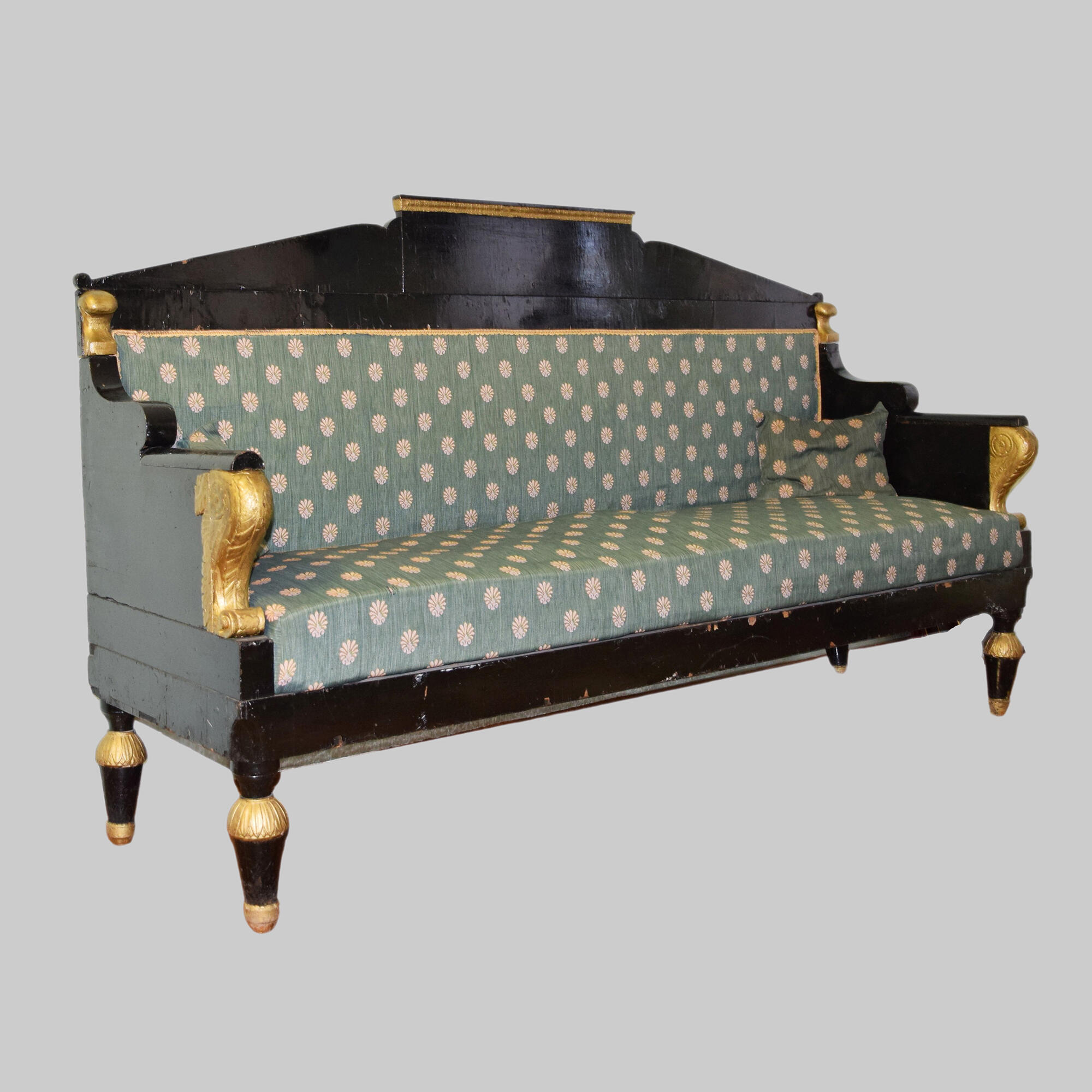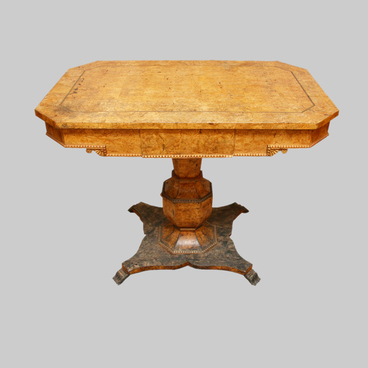Decembrist Matvey Ivanovich Muravyov-Apostol was in Yalutorovsk from 1836 to 1856. According to the recollections of his contemporaries, he lived in an elite part of the city, in a very well furnished house. The house was built much earlier, in 1795, and modern furniture was imported, which was created in the first half of the 19th century. The interior of the house of a nobleman, Decembrist, hero of the Patriotic War of 1812, Matvey Muravyov-Apostol, was decorated with a sofa, card table, piano and other items. Almost all the furniture for him was selected and sent to Siberia by his sister Ekaterina Bibikova (previously Muravyova-Apostol). After being granted amnesty in 1856, Matvey Muravyov-Apostol and his family left the city of Yalutorovsk forever, saying a heartfelt goodbye to its inhabitants. Part of his property, which included furniture, he distributed among friends and acquaintances. For example, the Myasnikov family inherited a sofa, an armchair and a table, and with them the legend that the Decembrist himself presented these items to their ancestor, the merchant Myasnikov. This furniture is currently displayed in the memorial house of M.I. Muravyov-Apostol. In the Decembrists in Yalutorovsk exhibit you can see an Empire style sofa from the first quarter of the 19th century, made in the Russian Empire. This item was transferred from the State Historical Museum in Moscow in 1969 for new exhibition.
The sofa is painted black, while the legs and the front of the armrests are bronze. The sofa is upholstered in a colored fabric with patterns: single stylized beige flowers are visible on the green background, located along the entire field in a checkerboard pattern. The back of the sofa is straight, upholstered, the upper part is framed in the form of a pentagon. The armrests are rigid, curled, their front part is decorated with carvings. Legs are figured, chiseled, in the middle part with a thickening, decorated with carved ornament in the form of petals. We know that the owner of the house, Matvey Muravyov-Apostol, spent a lot of time in his office, where he was engaged in business: he read books, entered data into the meteorological journal, which he kept in exile for many years. This piece of furniture was an integral part of any 19th century noble’s house. And Matvey Ivanovich, who was a noble, continued to preserve traditions in exile.
The sofa is painted black, while the legs and the front of the armrests are bronze. The sofa is upholstered in a colored fabric with patterns: single stylized beige flowers are visible on the green background, located along the entire field in a checkerboard pattern. The back of the sofa is straight, upholstered, the upper part is framed in the form of a pentagon. The armrests are rigid, curled, their front part is decorated with carvings. Legs are figured, chiseled, in the middle part with a thickening, decorated with carved ornament in the form of petals. We know that the owner of the house, Matvey Muravyov-Apostol, spent a lot of time in his office, where he was engaged in business: he read books, entered data into the meteorological journal, which he kept in exile for many years. This piece of furniture was an integral part of any 19th century noble’s house. And Matvey Ivanovich, who was a noble, continued to preserve traditions in exile.



